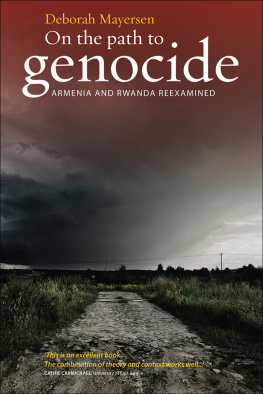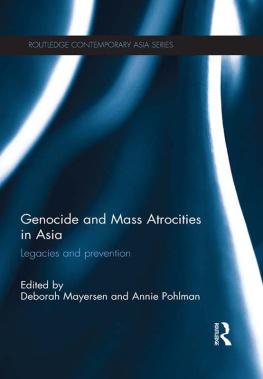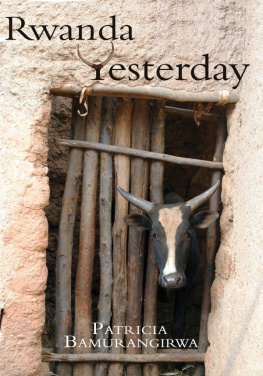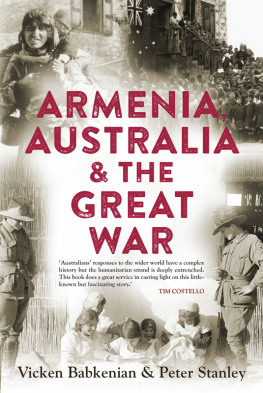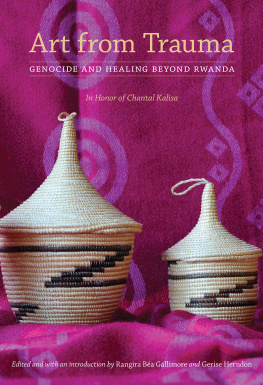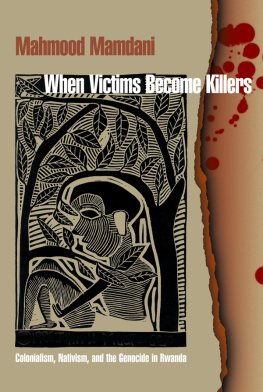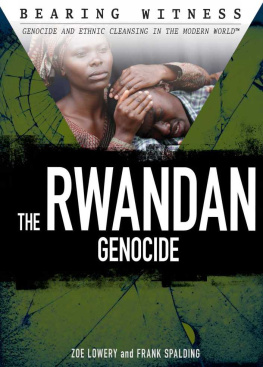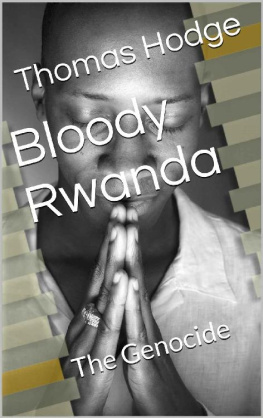Deborah Mayersen - On the Path to Genocide: Armenia and Rwanda Reexamined
Here you can read online Deborah Mayersen - On the Path to Genocide: Armenia and Rwanda Reexamined full text of the book (entire story) in english for free. Download pdf and epub, get meaning, cover and reviews about this ebook. year: 2014, publisher: Berghahn Books, genre: Romance novel. Description of the work, (preface) as well as reviews are available. Best literature library LitArk.com created for fans of good reading and offers a wide selection of genres:
Romance novel
Science fiction
Adventure
Detective
Science
History
Home and family
Prose
Art
Politics
Computer
Non-fiction
Religion
Business
Children
Humor
Choose a favorite category and find really read worthwhile books. Enjoy immersion in the world of imagination, feel the emotions of the characters or learn something new for yourself, make an fascinating discovery.
- Book:On the Path to Genocide: Armenia and Rwanda Reexamined
- Author:
- Publisher:Berghahn Books
- Genre:
- Year:2014
- Rating:4 / 5
- Favourites:Add to favourites
- Your mark:
- 80
- 1
- 2
- 3
- 4
- 5
On the Path to Genocide: Armenia and Rwanda Reexamined: summary, description and annotation
We offer to read an annotation, description, summary or preface (depends on what the author of the book "On the Path to Genocide: Armenia and Rwanda Reexamined" wrote himself). If you haven't found the necessary information about the book — write in the comments, we will try to find it.
On the Path to Genocide: Armenia and Rwanda Reexamined — read online for free the complete book (whole text) full work
Below is the text of the book, divided by pages. System saving the place of the last page read, allows you to conveniently read the book "On the Path to Genocide: Armenia and Rwanda Reexamined" online for free, without having to search again every time where you left off. Put a bookmark, and you can go to the page where you finished reading at any time.
Font size:
Interval:
Bookmark:


First paperback edition published in 2016
| APROSOMA | LAssociation pour la Promotion Sociale de la Masse |
| BBTG | Broad-based transitional government |
| CDR | Coalition pour la Dfense de la Rpublique |
| CUP | Committee of Union and Progress |
| FAR | Rwandan Armed Forces |
| GDP | Gross domestic product |
| GNP | Gross national product |
| IMF | International Monetary Fund |
| JEM | Justice and Equality Movement |
| MDR | Mouvement Dmocratique Rpublicain |
| MDR/PARMEHUTU | Mouvement Dmocratique Rwandais/Parti du Mouvement et de lmancipation Hutu |
| MRND | Mouvement Rvolutionnaire National pour le Dveloppement |
| NGO | Nongovernmental organization |
| NRA | National Resistance Army |
| PARMEHUTU | Parti du Mouvement et de lmancipation Hutu |
| PDC | Parti Dmocrate-Chrtien |
| PL | Parti Libral |
| PSD | Parti Social-Dmocrate |
| RADER | Rassemblement Dmocratique Ruandais |
| RPF | Rwandan/Rwandese Patriotic Front |
| RTLM | Radio Tlvision Libre des Mille Collines |
| SLM/A | Sudan Liberation Movement/Army |
| TRAFIPRO | Cooprative Travail, Fidelit, Progrs |
| UN | United Nations |
| UNAMIR | United Nations Assistance Mission for Rwanda |
| UNAR | Union Nationale Rwandaise |

Font size:
Interval:
Bookmark:
Similar books «On the Path to Genocide: Armenia and Rwanda Reexamined»
Look at similar books to On the Path to Genocide: Armenia and Rwanda Reexamined. We have selected literature similar in name and meaning in the hope of providing readers with more options to find new, interesting, not yet read works.
Discussion, reviews of the book On the Path to Genocide: Armenia and Rwanda Reexamined and just readers' own opinions. Leave your comments, write what you think about the work, its meaning or the main characters. Specify what exactly you liked and what you didn't like, and why you think so.

